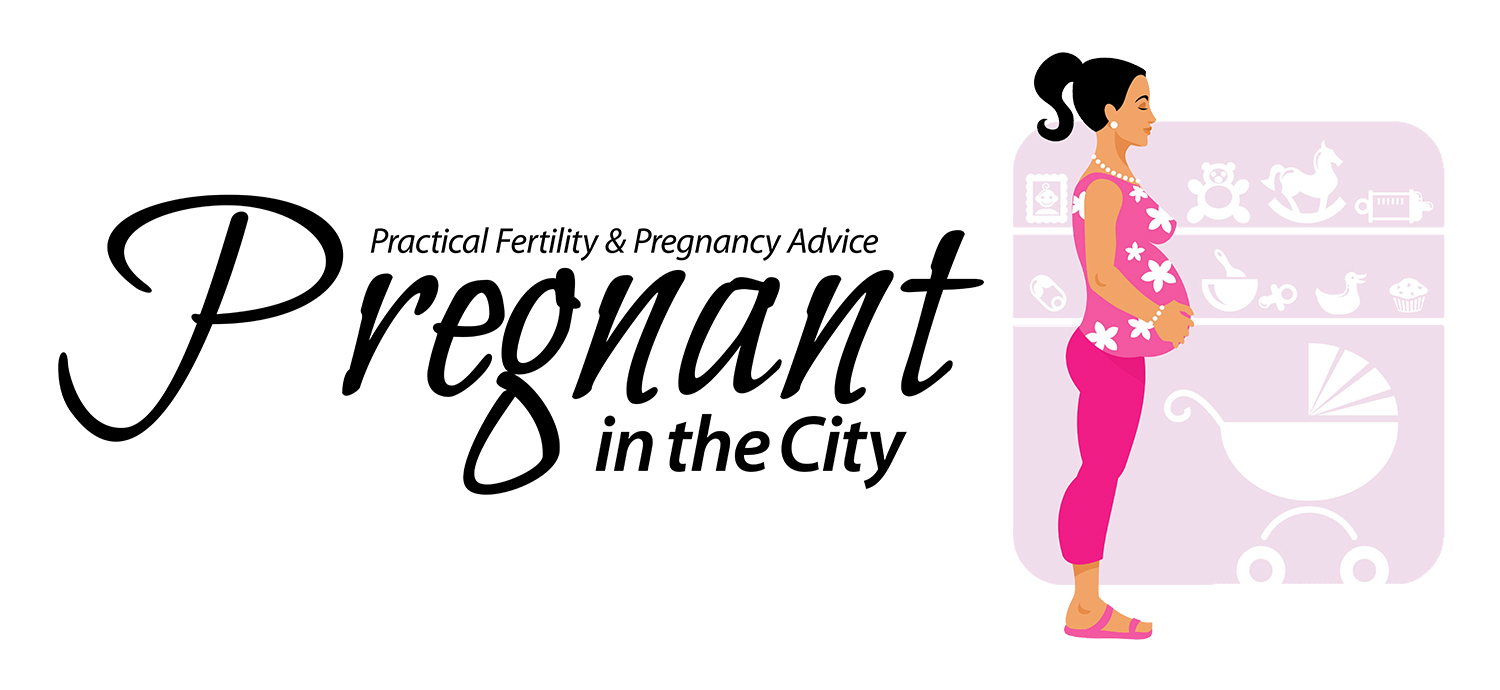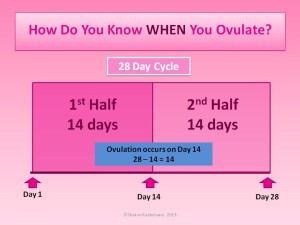This is a great place to start for someone who is just beginning to prepare for getting pregnant.
The three things you are going to learn about in this article are:
- Why do you need to know about ovulation
- How do you know IF you ovulate
- How do you know WHEN you ovulate?
Why do you need to know about ovulation?
The simple answer is because you can only get pregnant around ovulation time.
Ovulation is when an egg is released each month from the ovary and the egg needs to be fertilized by the sperm in order to develop into an embryo which then grows and becomes a baby. Therefore, knowing about ovulation is the most important we need to know about when trying to get pregnant.
Knowing IF you ovulate is essential. I often get asked by women, how do I know if I ovulate?
If your period is regular, most likely you are ovulating each month. And by regular I mean that your period comes once a month. That you know when to expect your period. It could be every 28 days, every 30 or a variation on that but if there is a regularity to it, then you are probably ovulating.
Here and there I have heard of some women who had very regular periods but did not ovulate or release an egg each month. But this is not common. If you never know when to expect your period or sometimes you go for weeks and months without a period, then it may mean that there is an issue with ovulation. It does not in any way mean you won’t be able to get pregnant, just that it might be a bit more difficult. If you do not have periods that come regularly, then I think it’s a good idea to see your doctor to explore further any issues with ovulation.
Now the most important question: how do you know when you ovulate? Let’s start by taking a look at the basic menstrual cycle. This picture shows a 28 day menstrual cycle.

A menstrual cycle is split into two halves: the first half is when you get your period, your period ends and then the body builds a juicy lining in the womb or uterus, getting ready for pregnancy. Ovulation is when the egg is released. If the egg is fertilized by sperm it becomes an embryo and if it implants in the lining of the uterus, pregnancy begins. If the egg is not fertilized, then the egg breaks down. The body gets the signal that there is no pregnancy and after a few more days your menstrual cycle ends and then you get your period, which is the start of the next menstrual cycle.
So how do we calculate when we ovulate. Start simply, by making the note of the date when you get your period. Day 1, the first day of your menstrual cycle is the first day of real bleeding. Some women have some spotting before their period begins. This doesn’t count. The first real red bleeding is the first day of your menstrual cycle. Make a note of the date of the next period and then count the days in between. For example, if you get your period on September 1st and then get the next one on September 29th, your cycle is 28 days in length. Ovulation occurs roughly 14 days BEFORE you get your period so here is a fairly simple way to figure out when you ovulate. This will vary a bit between women but gives you a rough idea.
If you have a menstrual cycle that is 28 days in length, you can deduct 14 from 28 to get 14. If your cycle is a bit shorter, say 26 days, then you will ovulate around day 12.
And if your cycle is on the longer side, say 30 days then you will ovulate around day 16. Again there are exceptions to this. Some women may have what is called a luteal phase defect meaning that the second half of their cycle is much shorter than 14 days.
Once you figure when you ovulate then the next step is calculate your fertile window. The fertile window is the only time during your menstrual cycle when you can get pregnant. Despite what we have been taught to think, that we can get pregnant at any time during our menstrual cycle if we have having unprotected sex, it’s actually not true. There is just a short period of time, about a week in length when we can get pregnant. A quick word about sex. If you have having regular sex, every 2 days throughout the entire menstrual cycle then you don’t need to calculate this fertile window or even calculate ovulation as you will be having sex around the time the egg is released. If you have regular periods and have frequent sex then just keep doing what you are doing for the next six months or so to see if you get pregnant.
For now back to ovulation. For many reasons, couples are not having regular sex. It can be due to travel with work, religion, other children and commitments making less time for sex, a point in the relationship where sex is less important, or low libido. It then it becomes very important to calculate this fertile window so you can time sex with ovulation and increase your chances of getting pregnant. A couple of things to understand when thinking about this concept of the fertile window. The sperm typically lasts up to 5 days inside the uterus after it is released during sex. The egg on the other hand is a bit more fragile and only survives for around a day. This means that the fertile window is about 6 days in length which includes the time the sperm can survive plus the time the egg survives.
 And now for the most important thing to remember about the fertile window. This is the time BEFORE ovulation and the day of ovulation. NOT after ovulation. This is a common mistake that people think that there is time to have sex after ovulation and still get pregnant. If there is one thing that you take away from this presentation is have sex BEFORE ovulation. This is the most important thing to remember. Think of this picture: if you have Madonna or Lady Gaga about to go on stage to perform do you think they are going to go out there if the seats are still empty. No of course not. So fill the seats before the diva comes on stage. Get the sperm in the uterus swimming up the fallopian tubes and hanging out waiting for the egg to be released. Don’t wait until ovulation to have sex as it could be too late. So fill the seats before the diva arrives on stage.
And now for the most important thing to remember about the fertile window. This is the time BEFORE ovulation and the day of ovulation. NOT after ovulation. This is a common mistake that people think that there is time to have sex after ovulation and still get pregnant. If there is one thing that you take away from this presentation is have sex BEFORE ovulation. This is the most important thing to remember. Think of this picture: if you have Madonna or Lady Gaga about to go on stage to perform do you think they are going to go out there if the seats are still empty. No of course not. So fill the seats before the diva comes on stage. Get the sperm in the uterus swimming up the fallopian tubes and hanging out waiting for the egg to be released. Don’t wait until ovulation to have sex as it could be too late. So fill the seats before the diva arrives on stage.
This is a chart to show approximate fertile windows based on your cycle length.
Don’t worry if one month you ovulate on day 12 then the next on day 14 and then day 16. If you are having sex several days before you expect ovulation then you should be fine.



